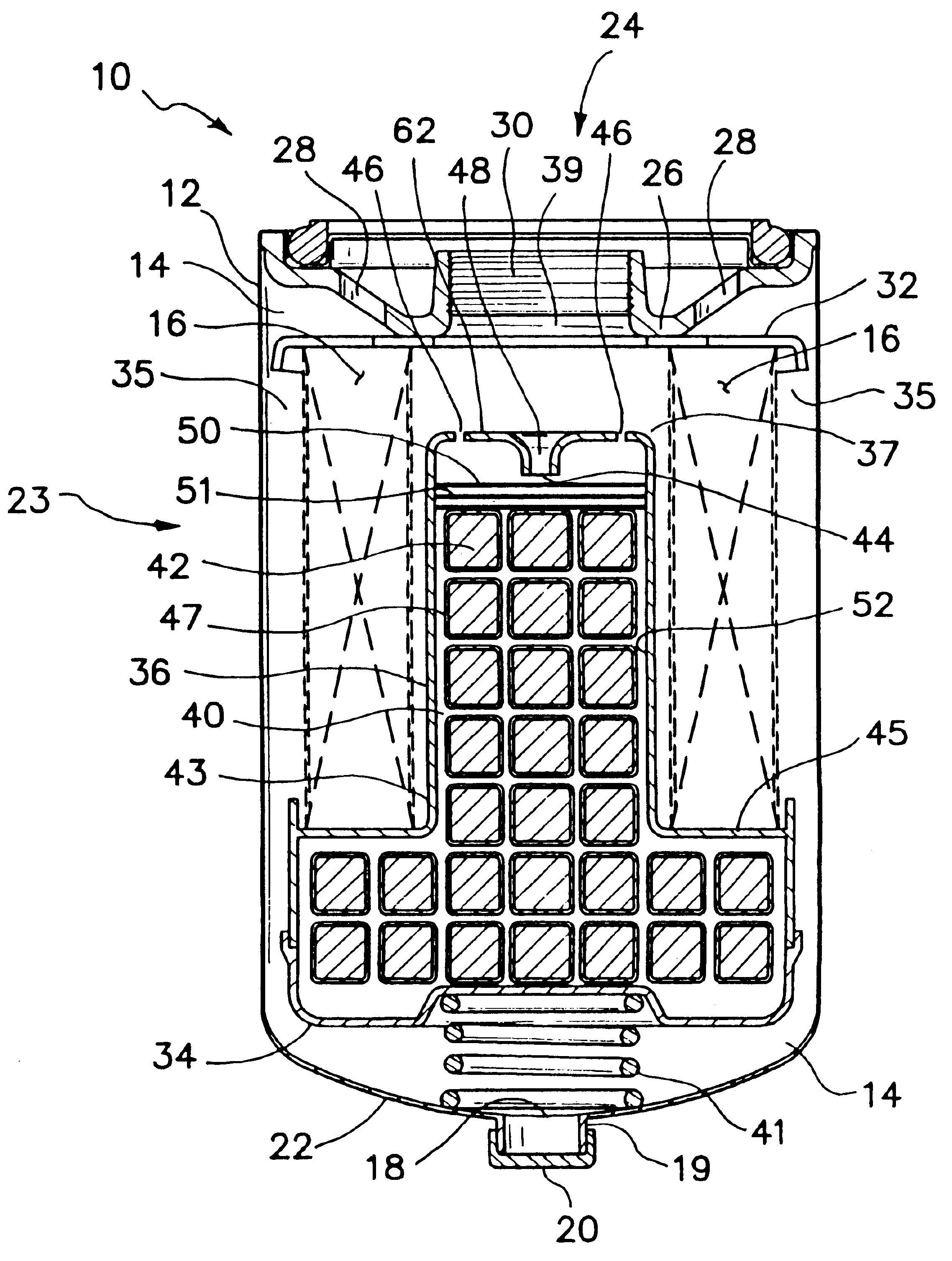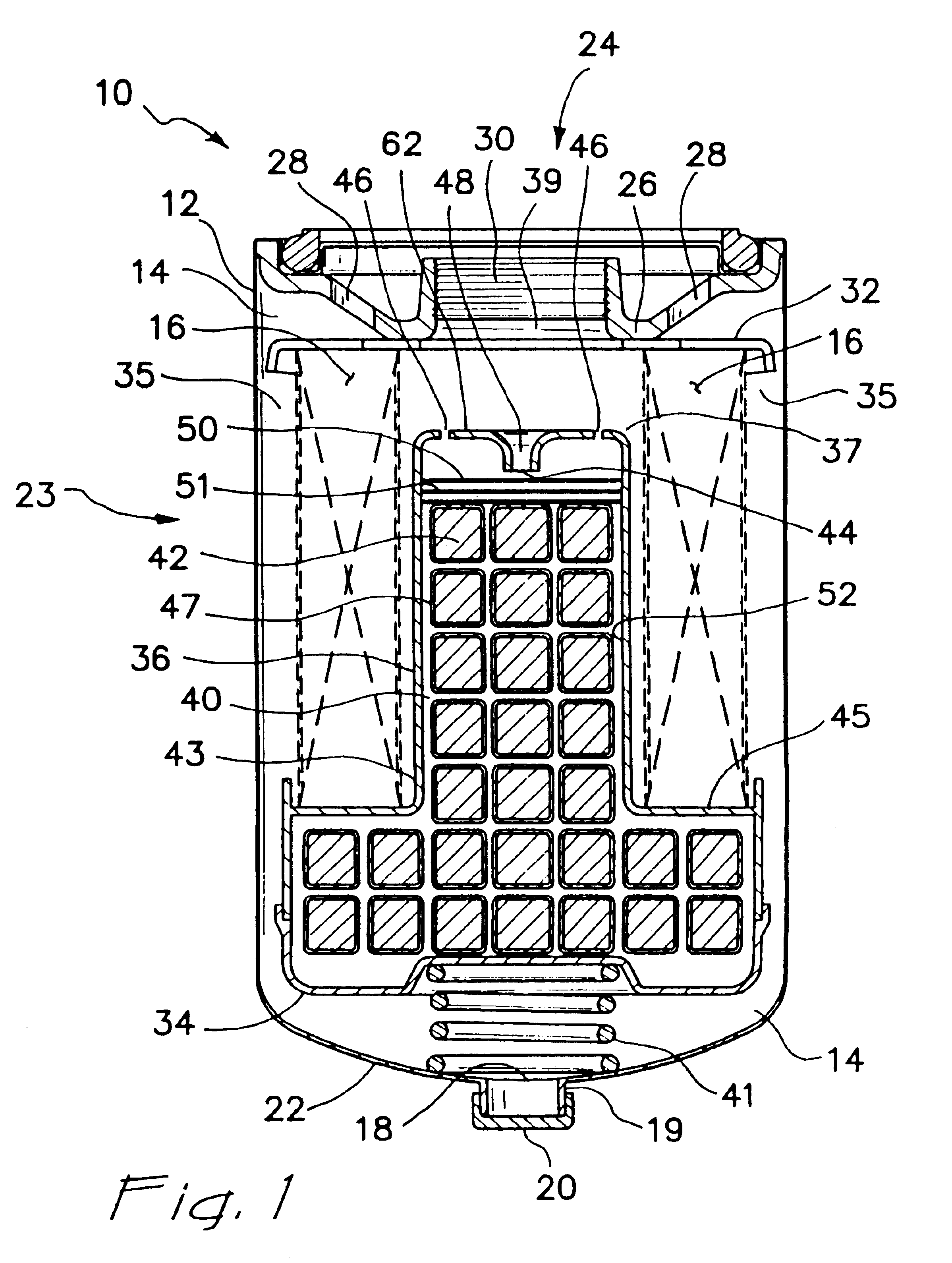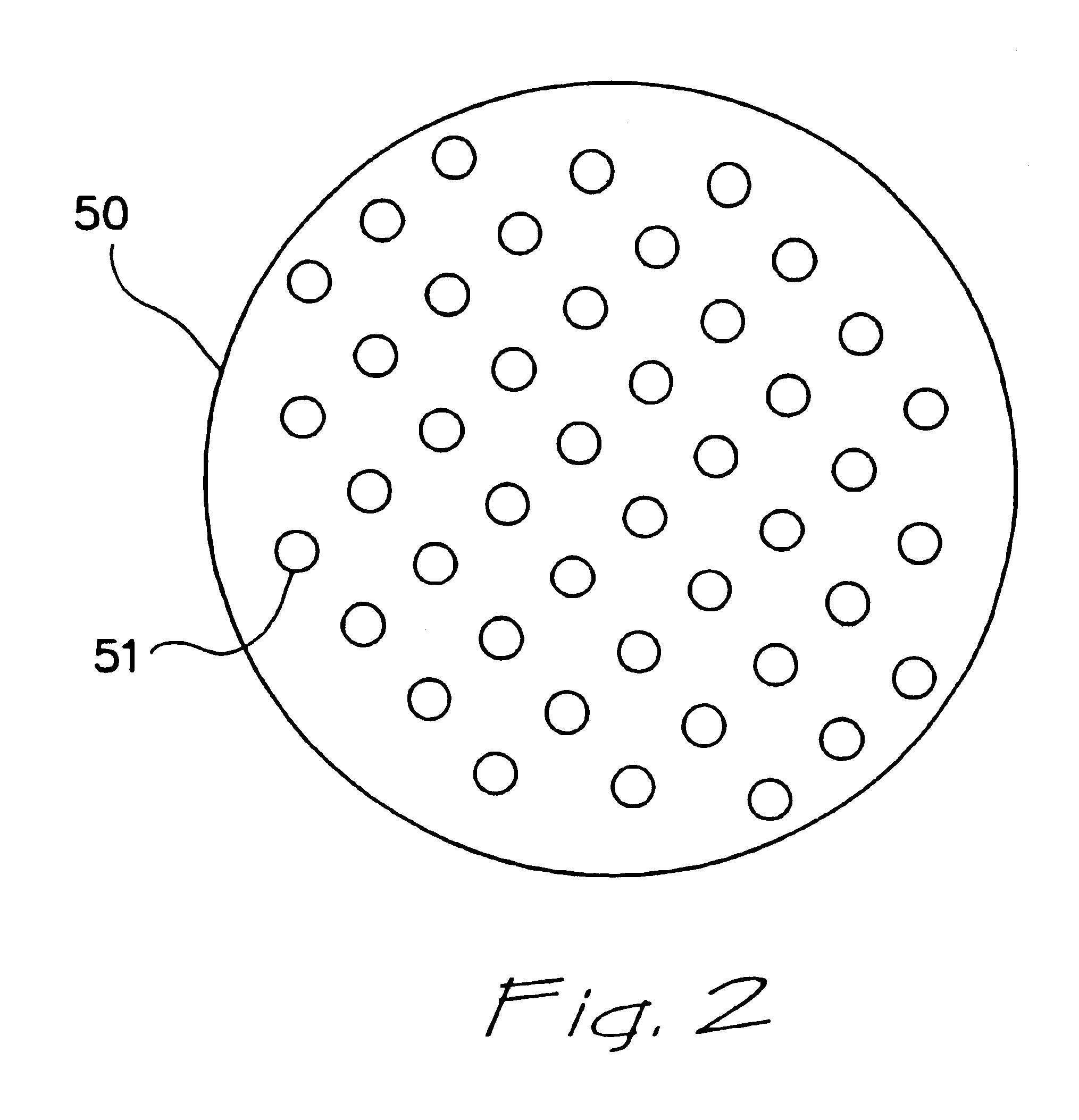Fuel filter including slow release additive
a technology of additives and fuel filters, applied in the field of fuel filters, can solve the problems of reducing reliability, significantly increasing vehicle reducing engine performance and fuel efficiency, etc., and achieves the effect of releasing the fuel additive(s) into the fuel, reducing maintenance and operating costs, and preferably sustained and more preferably controlled
- Summary
- Abstract
- Description
- Claims
- Application Information
AI Technical Summary
Benefits of technology
Problems solved by technology
Method used
Image
Examples
example 1
500 g of Lubrizol OS#69593 dispersant / detergent and 500 g of a commercially available polyethylene wax are provided. The polyethylene wax is heated to a temperature above its melting point, for example, about 140° C. The dispersant / detergent is slowly combined with the molten polyethylene wax with constant stirring until all the dispersant / detergent is included and a substantially uniform mixture is formed. The mixture is then cooled and formed into tablets, using conventional techniques and equipment. The tablets include the dispersant / detergent distributed substantially uniformly in a polyethylene wax matrix.
example 2
600 g (50% by weight Lubrizol OS#69593 in 50% by weight polyethylene (PE wax) in the form of tablets is coated with 191 g of commercially available polyethylene / vinyl acetate copolymer latex over a period of 21 minutes to form coated tablets. Pan speed is 20 rpm, airflow 38 to 52 ft3 / min, air inlet temperature ranges from about 42° C. to about 57° C. (about 45° being preferred) and exhaust temperature ranges from about 27° C. to about 32° C. The tablets tumble well and there is virtually no “twinning.” Tablets with a dry coating weight of 12.7% are obtained. The tablets have a dull finish and uniform orange peel appearance under the microscope. After standing, blocking of the tablets is apparent.
example 3
800 g of the uncoated tablets having a composition as set forth in Example 2 are placed in the coating unit. A total of 365 g of commercially available polyethylene / vinyl acetate copolymer latex is sprayed and about 25 g of coated tablets are removed approximately every 10 minutes to obtain tablets with increasing coating weights. Total run time is 39 minutes. Pan speed is 20 rpm, airflow is 38 to 42 ft3 / min, air inlet temperature ranges from 43° C. to 56° C. and exhaust temperature ranges from 27° C. to 30° C. Tablets with 3.2, 9.7, 15.6 and 18.3% coating (dry weight) are obtained with every 10 minute intervals. The tablets have a dull finish and uniform orange peel appearance under the microscope. After standing, blocking of the tablets is apparent.
PUM
| Property | Measurement | Unit |
|---|---|---|
| melting point | aaaaa | aaaaa |
| melting point | aaaaa | aaaaa |
| diameter | aaaaa | aaaaa |
Abstract
Description
Claims
Application Information
 Login to View More
Login to View More - R&D
- Intellectual Property
- Life Sciences
- Materials
- Tech Scout
- Unparalleled Data Quality
- Higher Quality Content
- 60% Fewer Hallucinations
Browse by: Latest US Patents, China's latest patents, Technical Efficacy Thesaurus, Application Domain, Technology Topic, Popular Technical Reports.
© 2025 PatSnap. All rights reserved.Legal|Privacy policy|Modern Slavery Act Transparency Statement|Sitemap|About US| Contact US: help@patsnap.com



